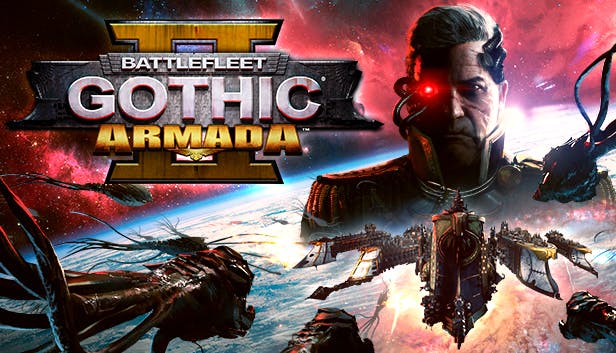Whenever life gets you down and things seem hard or tough and even though the planets are exploding and the aliens swarming and feel that you’ve had quite enough. Just remember that the Emperor protects.
Type: Single-player, Multi-player
Genre: Strategy
Developer: Tindalos Interactive
Publisher: Focus Home Interactive
Franchise: Warhammer
Release Date: 24 Jan, 2019


Preamble
It should come as no surprise that Battlefleet Gothic: Armada II is the sequel to Battlefleet Gothic: Armada. While you should probably play Battlefleet Gothic: Armada first for the sake of the story, you are able to pick up Battlefleet Gothic: Armada II and play it without really realizing you have missed anything. The reason for this little convenience is because no matter where you are in the Warhammer franchise odds are you missed something. The games are very lore heavy but they do almost always share the pertinent details to catch you up with applicable goings on in the Warhammer universe. Just be aware that the Emperor protects and be strong in the knowledge that heresy isn’t allowed and you will have no trouble fitting right in.
Speaking of the Emperor, there are three campaigns for you to enjoy this time around. The Imperium of Man in the service of our glorious Emperor. As well as those that stray from the Emperor’s light, the relentless undying Necrons and the insidious parasitic Tyranids. It would be heresy to play those campaigns, though. If you take the fight online there are twelve factions to choose from although only five of them are available throughout the single-player campaign. For the purposes of this review, simply for the sake of time, we will focus on the story driven campaign factions rather than each of the twelve individual factions.
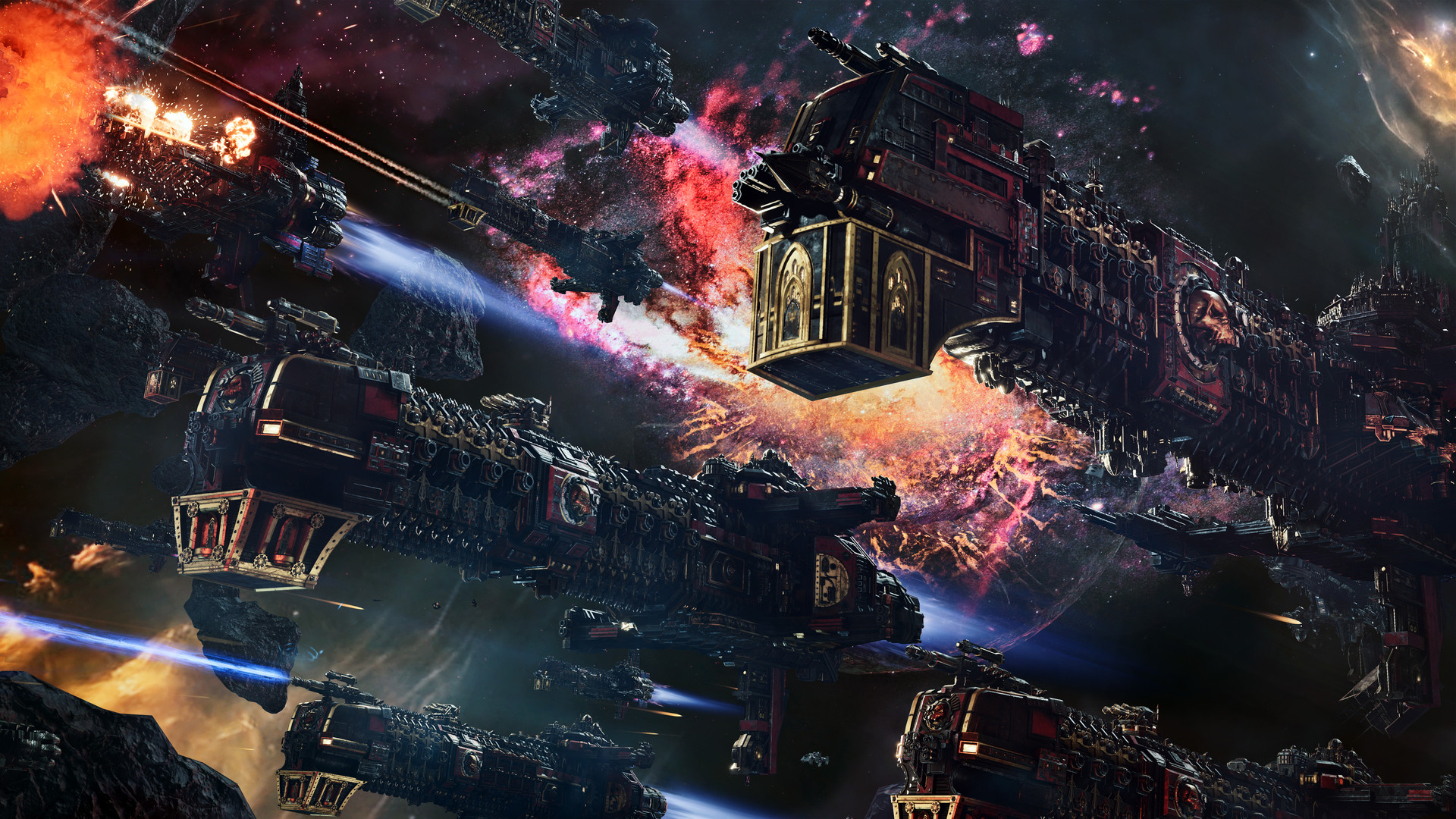
Speaking of time, Admiral Spire makes a triumphant return to the Emperor’s fleet when he finally finds the exit from warp he took some 800 years earlier. You would think after being lost in time for 800 years that his ship would get outmatched by even a small scout ship due to the newer ship being 800 years more advanced in both weapons and shield technologies. In this case you would be wrong as you should never forget one very important thing; the Emperor protects! People assume that time is a strict progression of cause to effect, but actually from a non-linear, non-subjective viewpoint – it’s more like a big ball of wibbly wobbly, time-y wimey stuff.
Review
Each campaign does play a little differently. While the core gameplay is basically the same, and can be a little repetitive in extended sessions, each faction has enough variation to it to make it feel different. The Imperium have battle ready vessels designed especially for charging into battle before unloading their broadsides onto the enemy. The Necrons rely on their ability to warp quickly around to do burst attacks rather than sit in prolonged combat. They can also move swiftly between sectors thanks to their gates. The Tyranids rely on inflicting terror into their enemies as they infest or otherwise consume them. They do not bother to try to protect worlds all that carefully. This is because once they are done with a world there is nothing left to protect. All that remains are the desolate ruins of a now dead world.
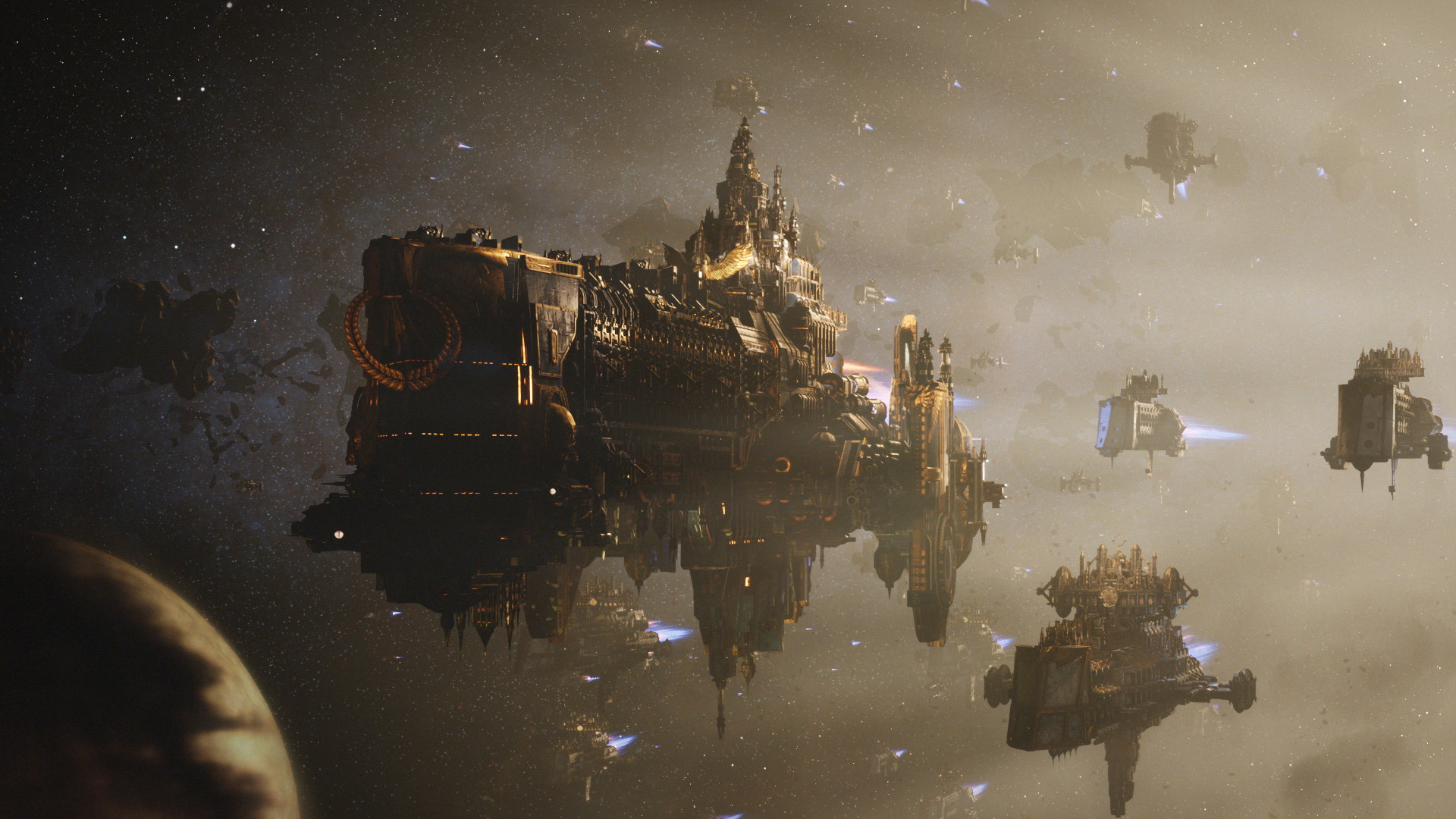
When you first start a campaign, you are given a couple of options besides who you want to play. As if there is any real choice, you wouldn’t want to be branded a heretic, would you? Besides choosing to side with the Emperor (or not) you can select the difficulty as well as the general victory condition rules. Right now, it is limited to just three options as far as I can tell. The basic last one standing style where two fleets enter, one fleet leaves victorious and the other in ruin. Another is a kind of king of the hill style where each side vies for control of strategic capture points on the map and hold them long enough to achieve a point-based win. That isn’t saying you can’t still blast the enemy into submission, but it does give you an alternate victory option. The last option is Random which basically sets the win condition to either straight combat or capture point based. Personally, I like having the capture point option turned on because it adds an extra layer of strategy plus occasionally I can still pull off a win even when I am horribly outmatched. Here is the funny thing too. You technically don’t even have to fight the fights regardless of the mode you have chosen. Each fleet has a rank. The game will evaluate the strength of your fleets versus that of the enemies and roll the dice. You could win instantly or lose instantly, and the outcome of the battle can either be a crushing win/loss or a Pyrrhic victory. Typically, if I have a really strong fleet and they have a trivial one I just let the auto-battle do its thing… although once that was a bad idea. No idea how a fleet one third my size crushed three fully loaded fleets of mine to the point that I couldn’t even salvage any of my ships, but it did happen… and sort of ended the campaign for me at that point because while I retreated back into my previous sector to rebuild my fleet I was hit by both resource issues and incursions. By the time I had a nice sizeable fleet I was surrounded by enemy fleets and soundly defeated. I was not playing for the Imperium though, so I didn’t have the Emperor to protect me. The lesson is, be a heretic and chances are you will miserably die like one.
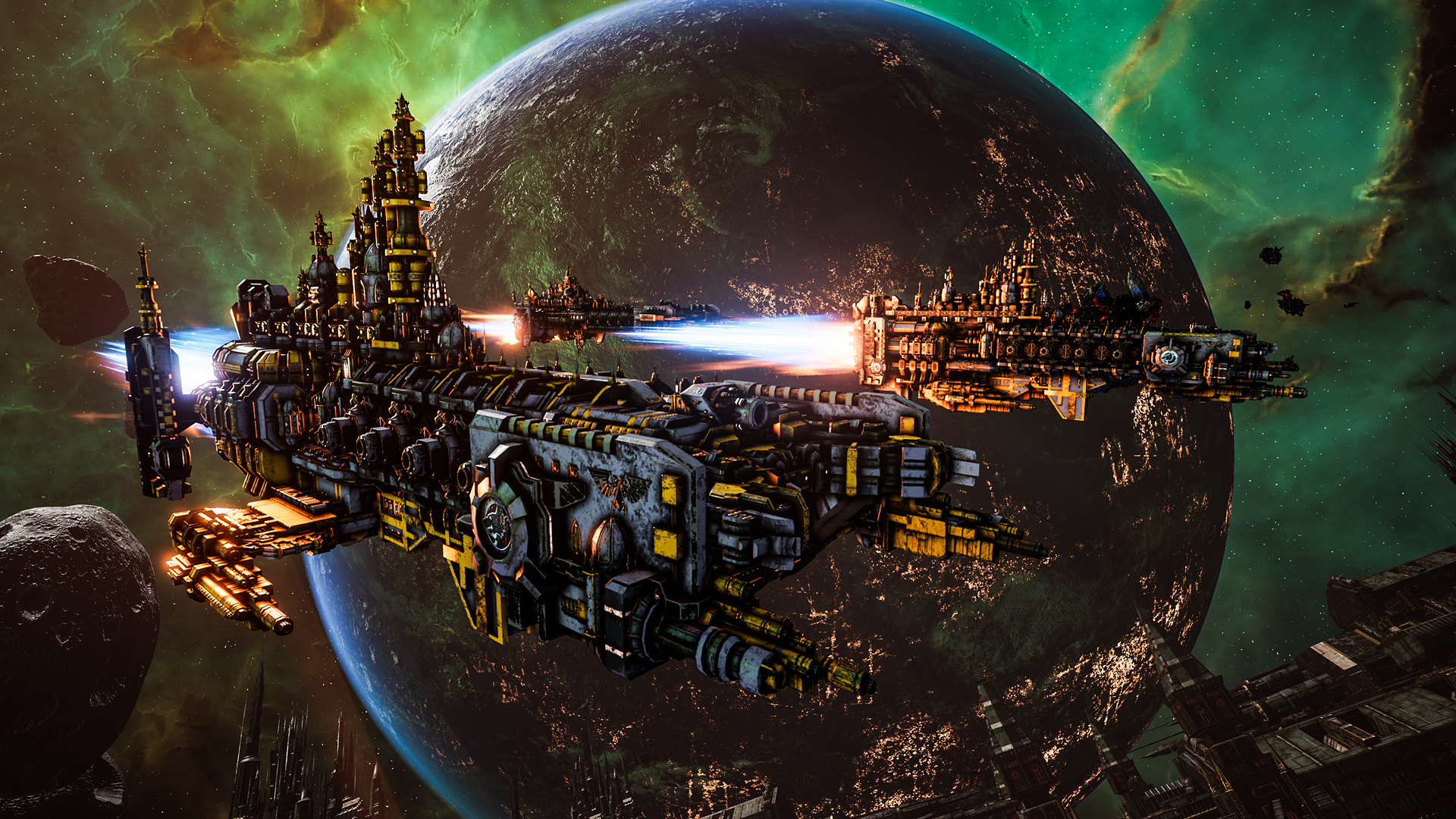
The game throws missions at you that tell you what you need to do to progress the story. If you fool around too much having fun capturing things that are not overly strategic, the game will start to panic a bit and escalate the tension. If it escalates too much you will lose the campaign. Basically, it forces you to progress at least a little between your random personal conquests. You wouldn’t want to keep his magnificence; the Emperor waiting now would you? Each system within the sector you take over has some value to it. Some planets will be basic and mostly give you resources, but others allow you to rebuild your fleets with their shipyards or have other special features for you to exploit. If you are the Necron, some will also have gates that allow you to jump efficiently between sectors. The enemies, once defeated, won’t always just sit there licking their wounds though, they will often attempt to retake systems or sectors forcing you to have defend yourself as you expand the Emperor’s domain. If you don’t have any defenses or ships in orbit you will quickly find your territory eroding behind you. However, if you build too many fleets you will find your resources are quickly tapped and the upkeep will limit your ability to maintain the fleet. This generally means you should leave some fleets behind in strategic areas in order to safeguard the systems that matter most to you, and have them clean out any incursions that may have occurred before they get too strong and become more formidable. Usually when someone is invading from outside of the sector it gives you a few turns to reposition your fleets. If the attack is coming from within the same sector you have to respond more quickly. Your ships can only move so many spaces on the map per turn so you need to try to spread your fleet out effectively if you want to ensure every system has some level of safety.
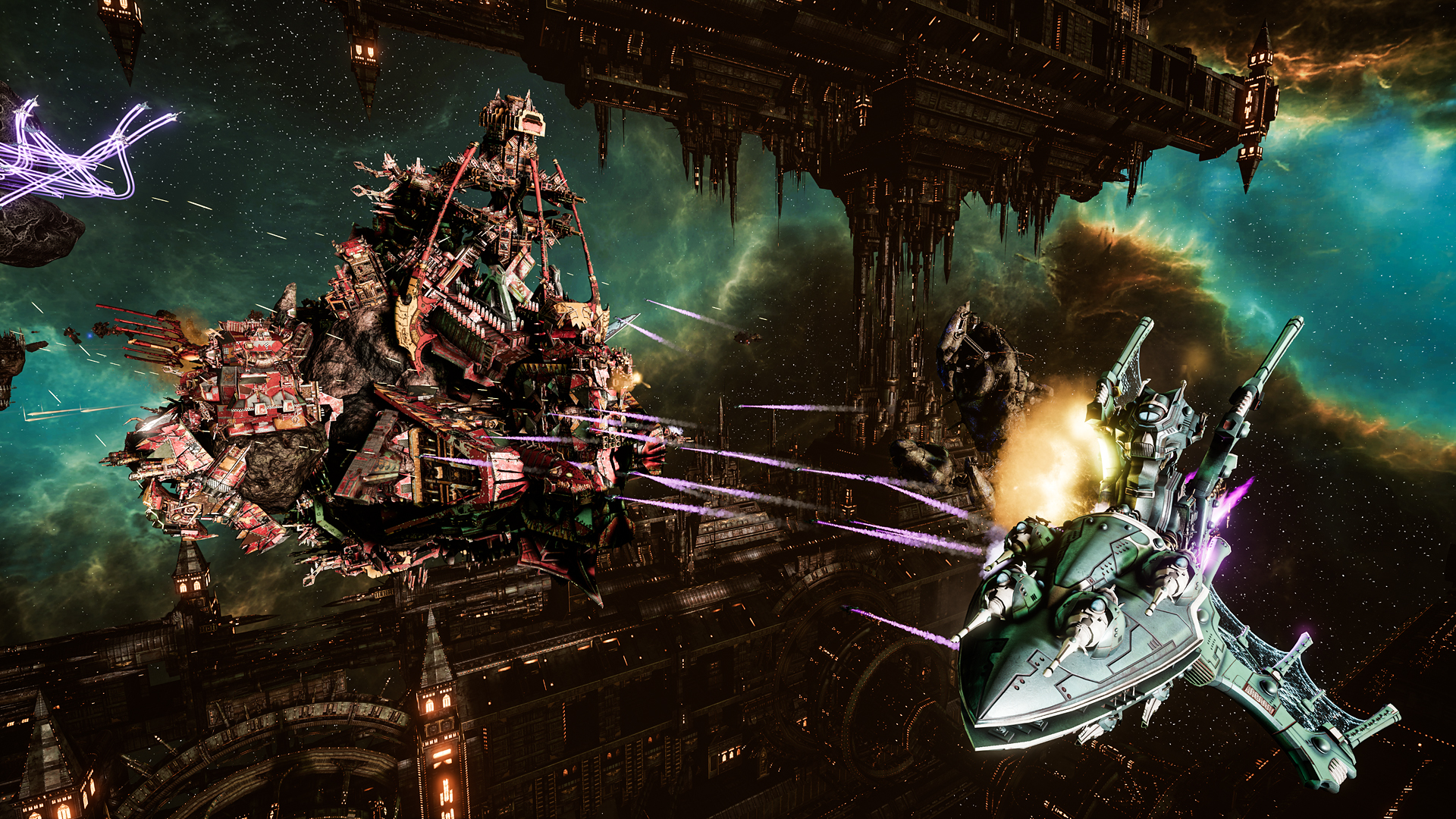
Besides just the standard battles, there are special story-based missions as well. Rather than just capturing points or blasting the enemy, the special missions have other required victory conditions. For example, holding out until reinforcements arrive, protecting a larger ship from being destroyed, etc. These offer up an extra interesting twist to the general gameplay which I mentioned can get a little tedious if you try to power play too hard for the story.
The game is more driven by story than it is by gameplay too. Warhammer is a very lore rich series and the game capitalizes on that. When you visit a new sector or even when key events occur you are treated with a decent length of voice acted story. It conveys some element of the game’s story or the lore surrounding it. I have always enjoyed these elements of the Warhammer franchise so I am always happy to see them. The lore is typically shared regardless of which faction you are playing which means that when you replay the game with another faction, you will likely have to watch the same cutscenes over again. If you are opposed to that idea the game does let you skip them if you actually want to. In game there is spoken dialogue as well. It is also skippable if you insist, but you really would be doing yourself a disservice by skipping over the story especially if this is your first time playing through it.
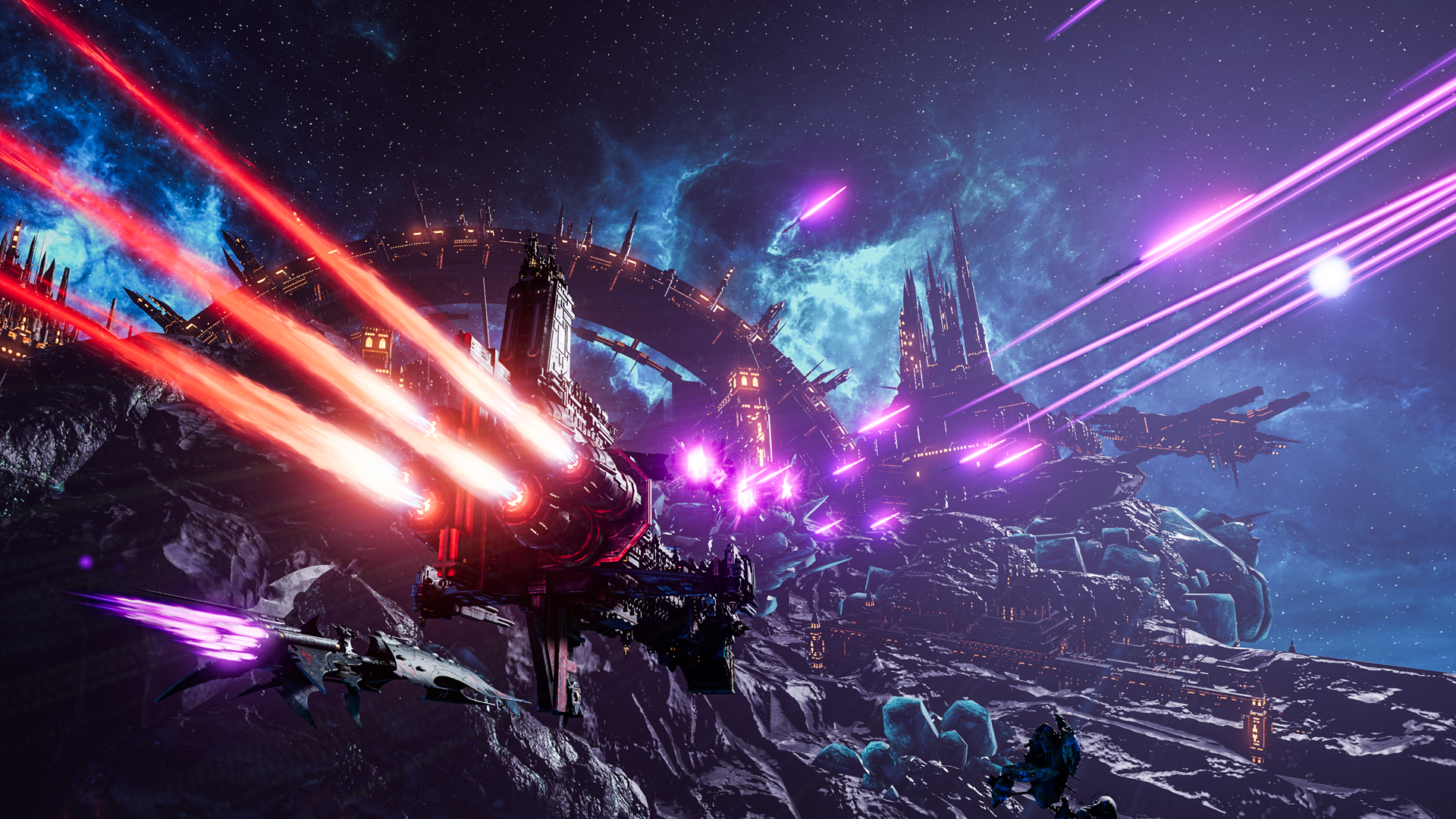
Graphically this game captures the charm of the Warhammer 40k miniatures and plays as if you are playing it on a board. The combat and movement are all two dimensional. There is movement in the X-axis and the Y-axis but it completely ignores the Z-axis. While it would be fun to have ships rise up and dive down on the field, I think that would detract too much from the pure Warhammer 40k feel of the game. The combat looks wonderful with all the different weapons being used. The Imperium have the most common looking weapons, which suits the Emperor just fine. The Necron have more flashy weapons and the Tyranids have more organic looking weapons. There is nothing more fearsome than multiple tendrils shooting out from the maws of each of the surrounding Tyranid ships and sinking deeply into their captured prey vessel other than perhaps if one outputs a blood curdling scream while doing so. Each ship is detailed quite well and the designs draw from the source material. You can zoom in on each of the ships to get a better look at their details or zoom out to get a more strategic view. The playing field is also quite easy on the eyes and while there are a lot of commonalities between playing fields, enough elements are added to each one to make them feel a little different.
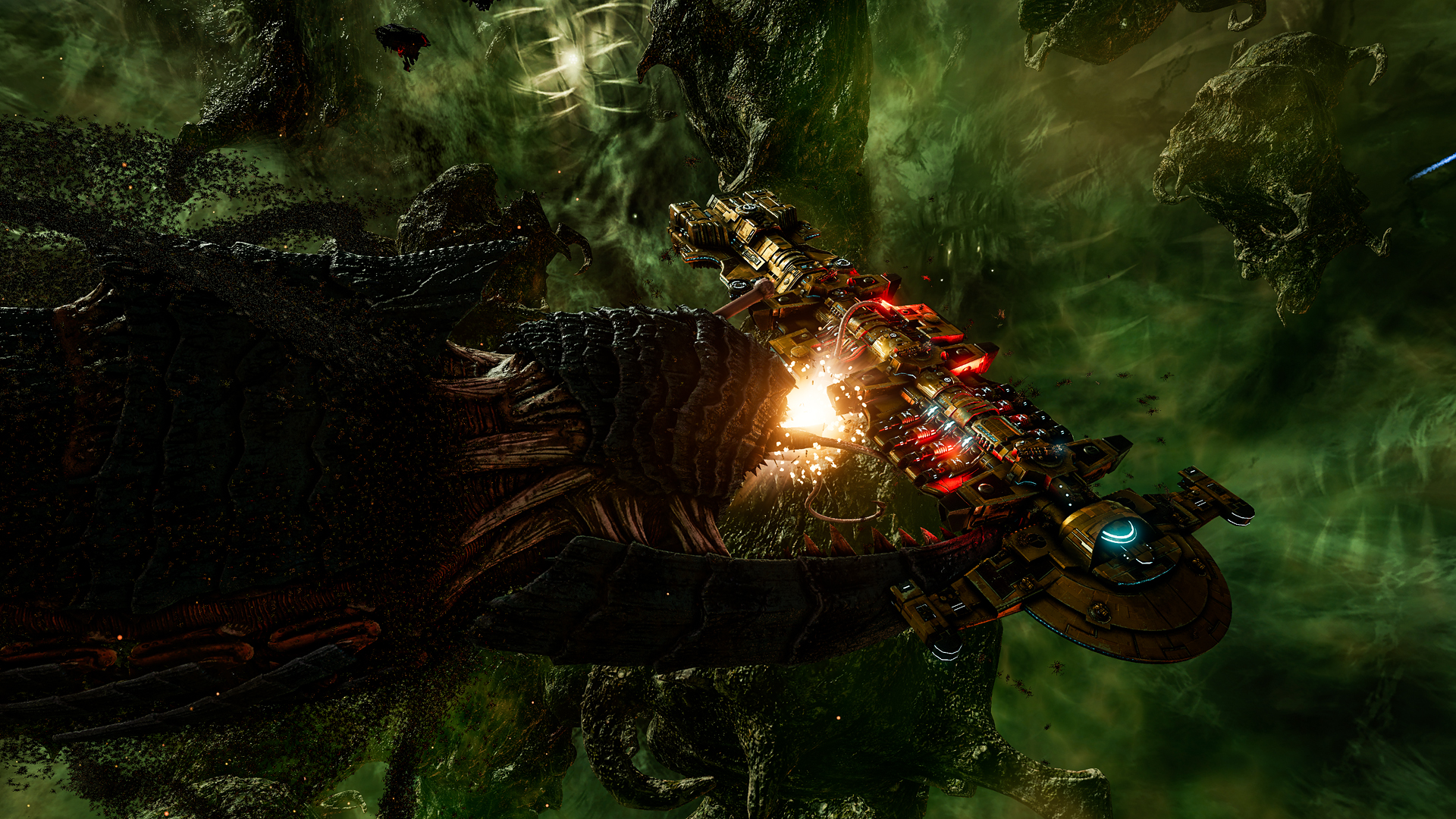
The gameplay in the game as described earlier does get a bit repetitive. Some of the maps do have special things going on in them which makes it more strategic and keeps it from getting dull or boring. For example: Having to watch your ships positions due to a meteoroid storm going through the area can lead to new strategic ways to play the game. The same goes if the space jellyfish are swimming though the area. If you see a gas cloud or asteroid field, you can enter it and use it as a stealthier way to lay in wait for an enemy who may be passing by. The controls are a bit complex, however, most things are usually both clickable and hot-keyed to make your life easier. The menus can be a little bit confusing and some pages have a lot of details for you to sort through, such as the fleet building screen, but this level of detail really helps you refine your fleet exactly how you want it. The controls while in the field are all smooth and responsive. Different classes of ships have different firing arcs and turning speeds and it felt proper. Small ships tend to be able to easily out maneuver a larger ship, but one wrong move will lead to those small ships being shredded. You can manipulate time in the field which allows you to speed up or slow down time as you see fit. I typically set it to fastest simply because the game felt a little too slow for me on normal. With that said, being on fastest when there are meteoroids crashing through the field can be really deadly as you likely won’t have enough time to react and move the ship to safety.
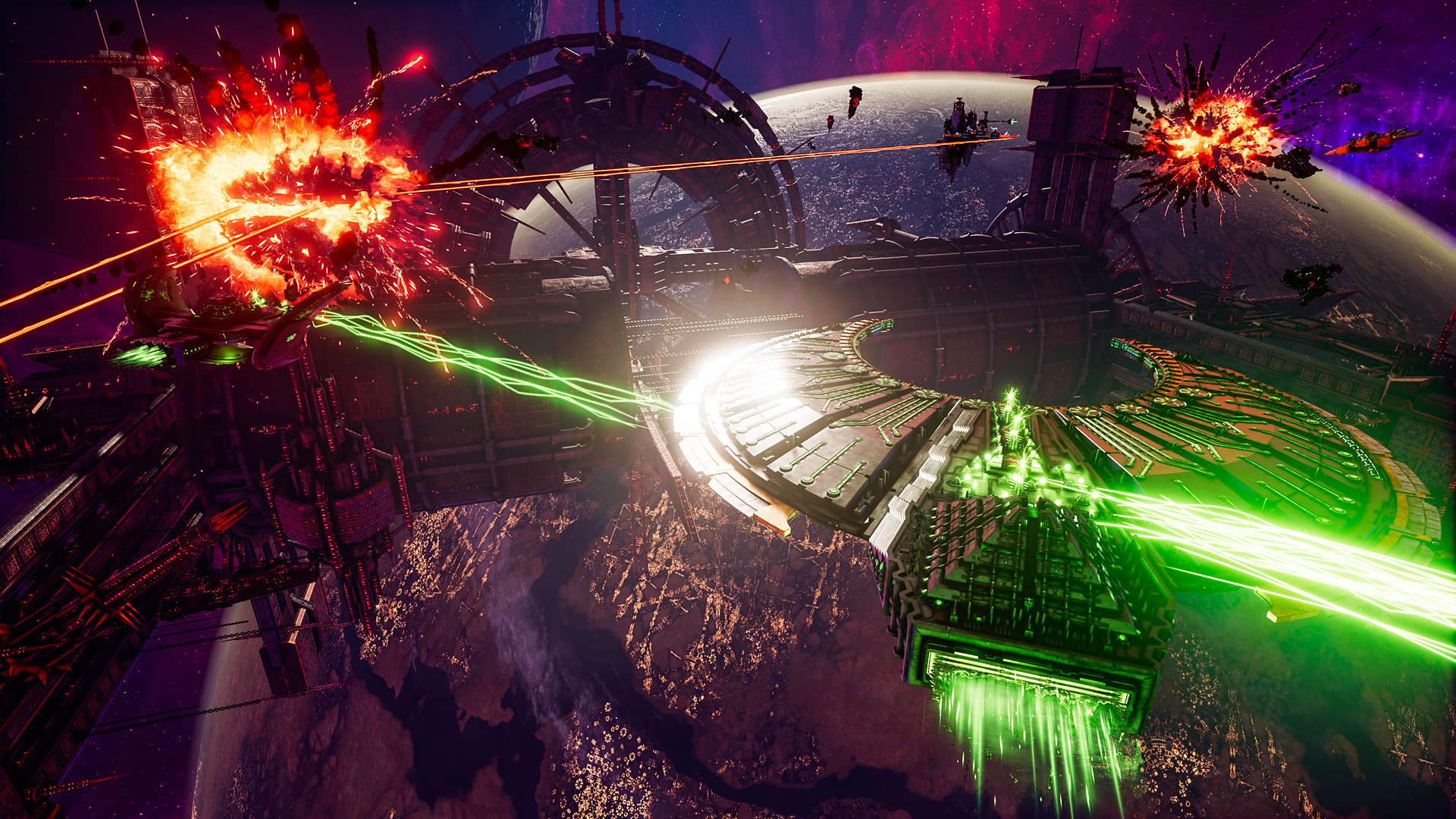
The multiplayer is where this game really can shine. While the single player function is great, don’t get me wrong, this game really feels like it was meant for multiplayer. You have access to more factions, you can still customize your fleet or take a prebuilt, and you can take on others to show who is truly the best fleet commander. Due to the game being relatively new out, there were not that many accessible multiplayer games while I was reviewing this, but there are definitely more games available now than there were about two weeks earlier. I also had a fair amount of lag while playing but I believe that was an issue on my end and not an issue with the multiplayer itself.
The sound in this game is perfectly atmospheric. The voice acting is top notch with none of them sounding phoned in. Some of them sounded a little over top but it really felt true to the Warhammer universe. The sound effects while repetitive they do not get tiresome. The music accompanying the game is very enjoyable and really goes a long way in keeping you in the spirit of the action.
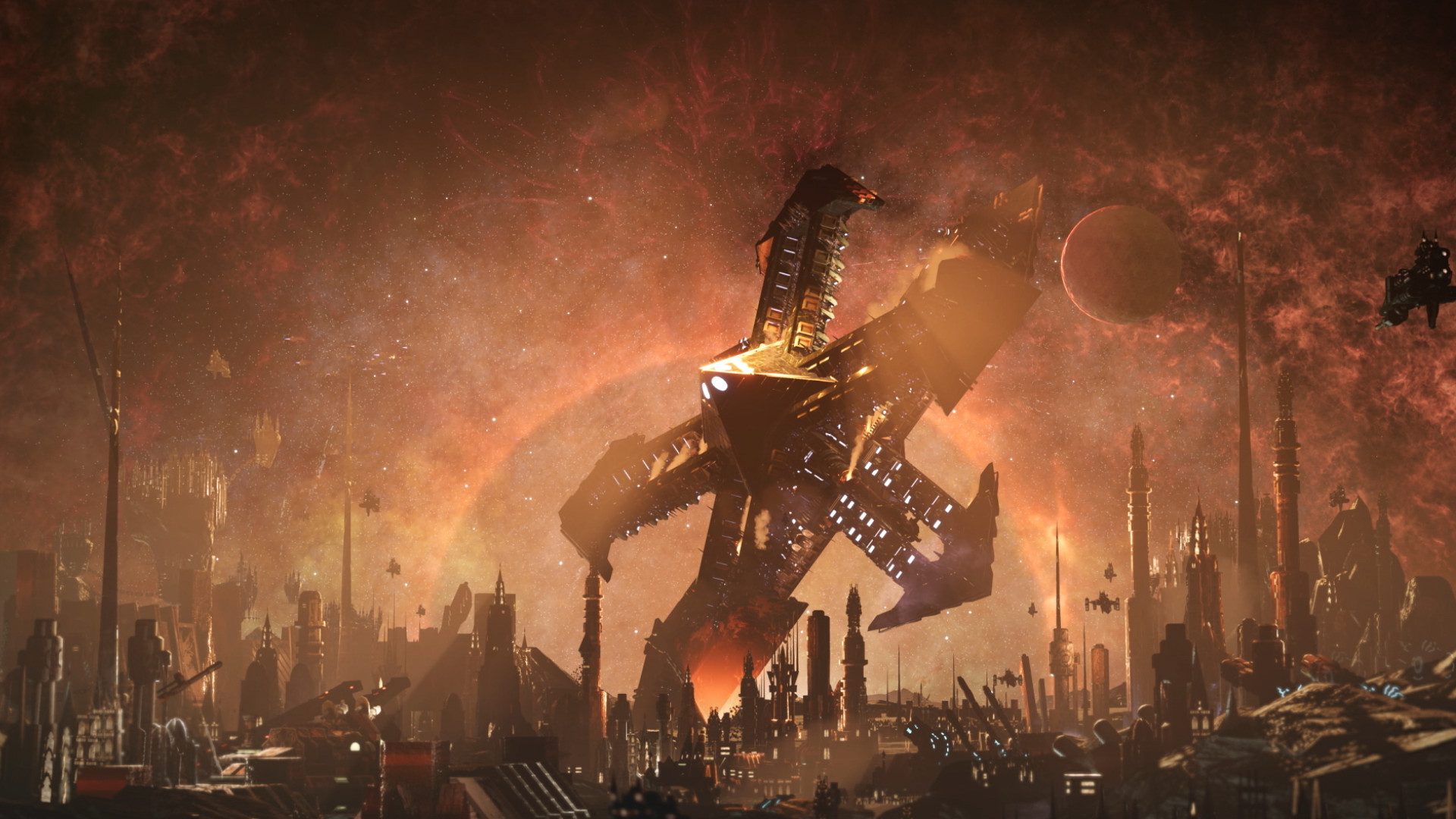
Verdict
So, should you pick up Battlefleet Gothic: Armada II? If you played the original Battefleet Gothic: Armada and enjoyed it I see no reason not to pick up the sequel. If you are a fan of the Warhammer universe and want to have some more lore bestowed upon you all while in the service of our glorious Emperor, then you will likely enjoy this game as well. If you are not familiar with Warhammer but are looking for a tactical space sim then this is definitely one you may want to consider checking out. It doesn’t matter if you are not familiar with every facet of the Warhammer lore, the game’s story can be picked up and understood easily without knowing anything about the underlying lore. Don’t be a heretic, serve your Emperor today! The Emperor protects!

